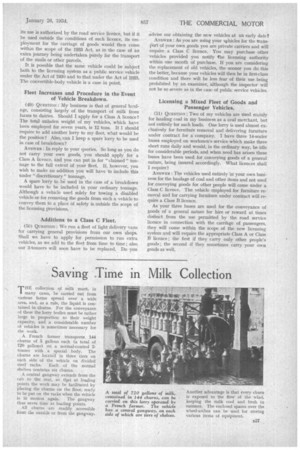Saving Time in Milk Collection
Page 37

If you've noticed an error in this article please click here to report it so we can fix it.
rr HE collection of milk must, in
many cases, he carried out from various farms spread over a wide area, and, as a rule, the liquid is contained in churns. For the conveyance of these the lorry bodies must be rather large in proportion to their weight capacity, and a considerable number of vehicles is sometimes necessary for the work.
A French farmer transports 144 churns of 5 gallons each (a total of 720 gallons) on a normal-control 2tonner with a special body. The chums are located in three tiers on each side of the vehicle on divided steel racks. Each of the normal shelves contains six churns.
A central gangway extends from the cab to the rear, so tl)at at loading points the work may he facilitated by placing the churns on the floor, ready to be put on the racks when the vehicle is in motion again. The gangway thus saves time at loading points.
All churns are readily accessible from the outside or from the gangway.
A total of 720 gallons of milk, contained in 144 churns, can be carried on this lorry operated by a French farmer. The vehicle has a central gangway, on each side of which are tiers of shelves.
Another advantage is that every churn is exposed to the flow of the wind, keeping the milk cool and fresh in summer. The enclosed spaces over the wheel-arches can be used for storing various items of equipment.




















































































